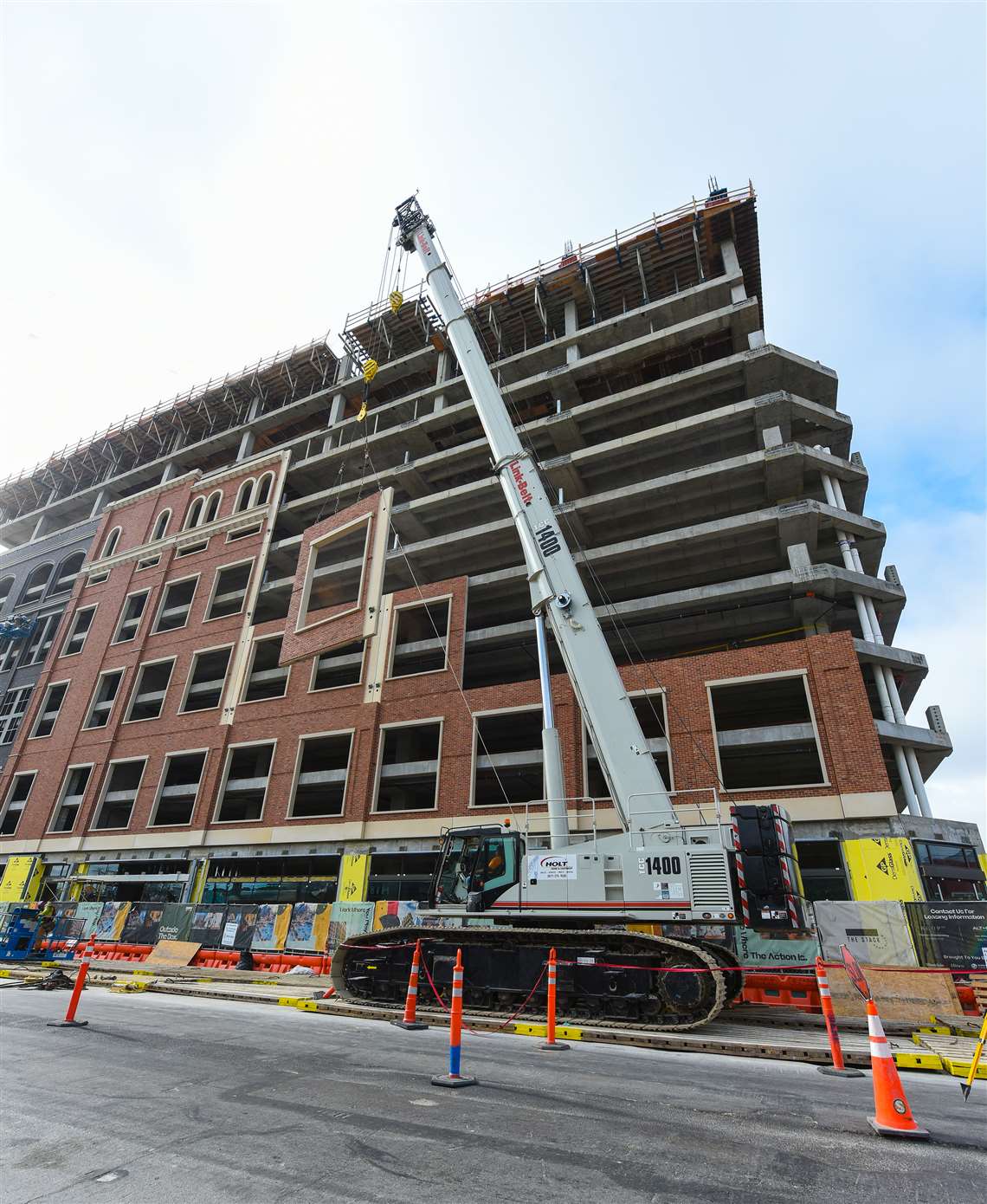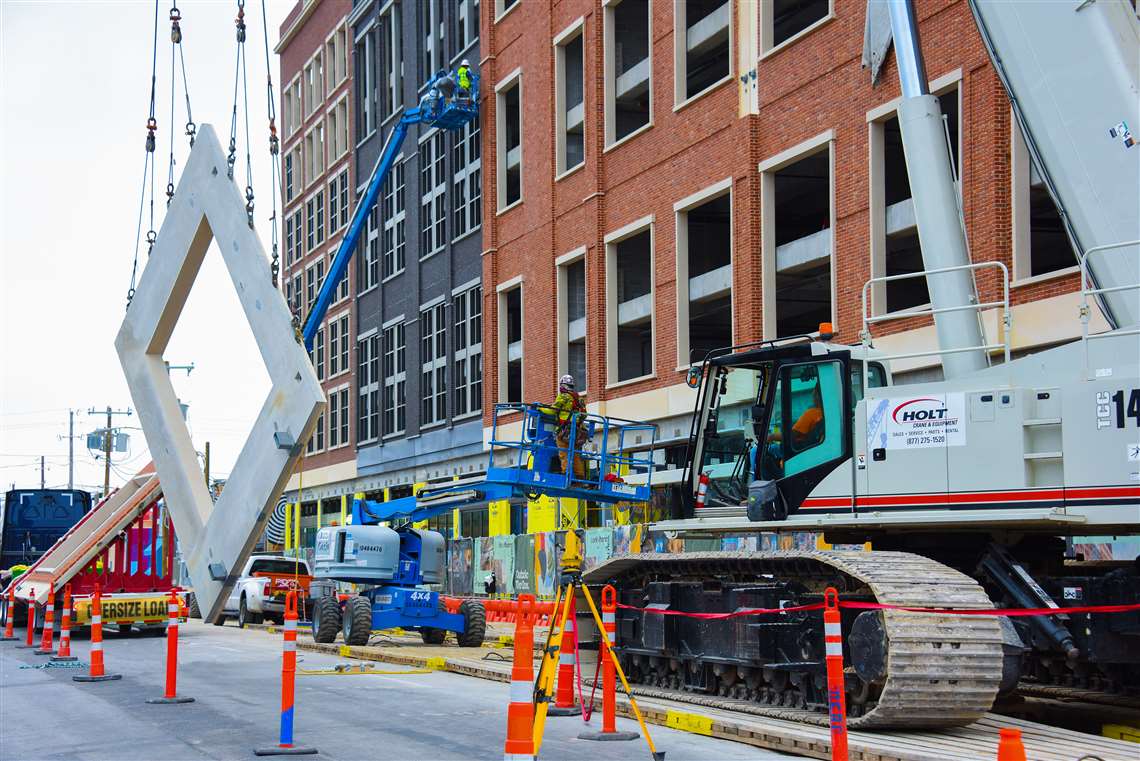Link-Belt crawler places panels in Texas
27 April 2021
Construction is underway at The Stack, a 16-story project in Deep Ellum, a historic downtown Dallas neighborhood in Texas, USA.
 The TCC-1400 used its stowable 10-foot fly for two winch line picks, each with three parts line to rotate the panels for placement.
The TCC-1400 used its stowable 10-foot fly for two winch line picks, each with three parts line to rotate the panels for placement.
Derr and Isbell Construction LLC of Euless, Texas, rented a Link-Belt 140 US ton TCC-1400 telescopic crawler crane from Holt Equipment of Irving, TX, to place more than 250 precast panels on the bottom ten stories of the new building. The tallest and heaviest precast concrete sections weighed as much as 38,600 pounds and the majority of the panels were 20 feet high and 15 feet wide (6 x 4.6 meters). The topmost panels were placed 100 feet (30 meters) from ground level and conceal outside terrace decks.
The precast panels were trailered onto the jobsite in a tilted position. The TCC-1400 used its stowable 10-foot (3 meter) fly for two winch line picks, each with three parts line to rotate the panels for placement. Two series of rolling blocks rigged with sufficient chokers lifted the panels off the trucks and then an additional two series of rolling blocks with 4 pick points attached to the top side to rotate the panels upright. The final panels of the project were placed on the south side of the building on Clover Street, an alley only 23 feet (7 meters) wide from foundation to foundation of existing buildings. With its 16.5-foot (5 meter) turning radius, the TCC-1400 was able to place the final few panels weighing up to 25,000 pounds (11.3 metric tons), 80 feet (24 meters) high.
“We chose the TCC-1400 in large part because it is so easy to maneuver around these city blocks,” said Randy Denn, superintendent, Derr & Isbell. “Whether it’s with pick and carry, or the tighter street requirements presented here in downtown Dallas, it’s an easy crane for this sort of work.”
 The final panels of the project were placed on the south side of the building on Clover Street, an alley only 23 feet (7 meters) wide from foundation to foundation of existing buildings.
The final panels of the project were placed on the south side of the building on Clover Street, an alley only 23 feet (7 meters) wide from foundation to foundation of existing buildings.
STAY CONNECTED


Receive the information you need when you need it through our world-leading magazines, newsletters and daily briefings.




